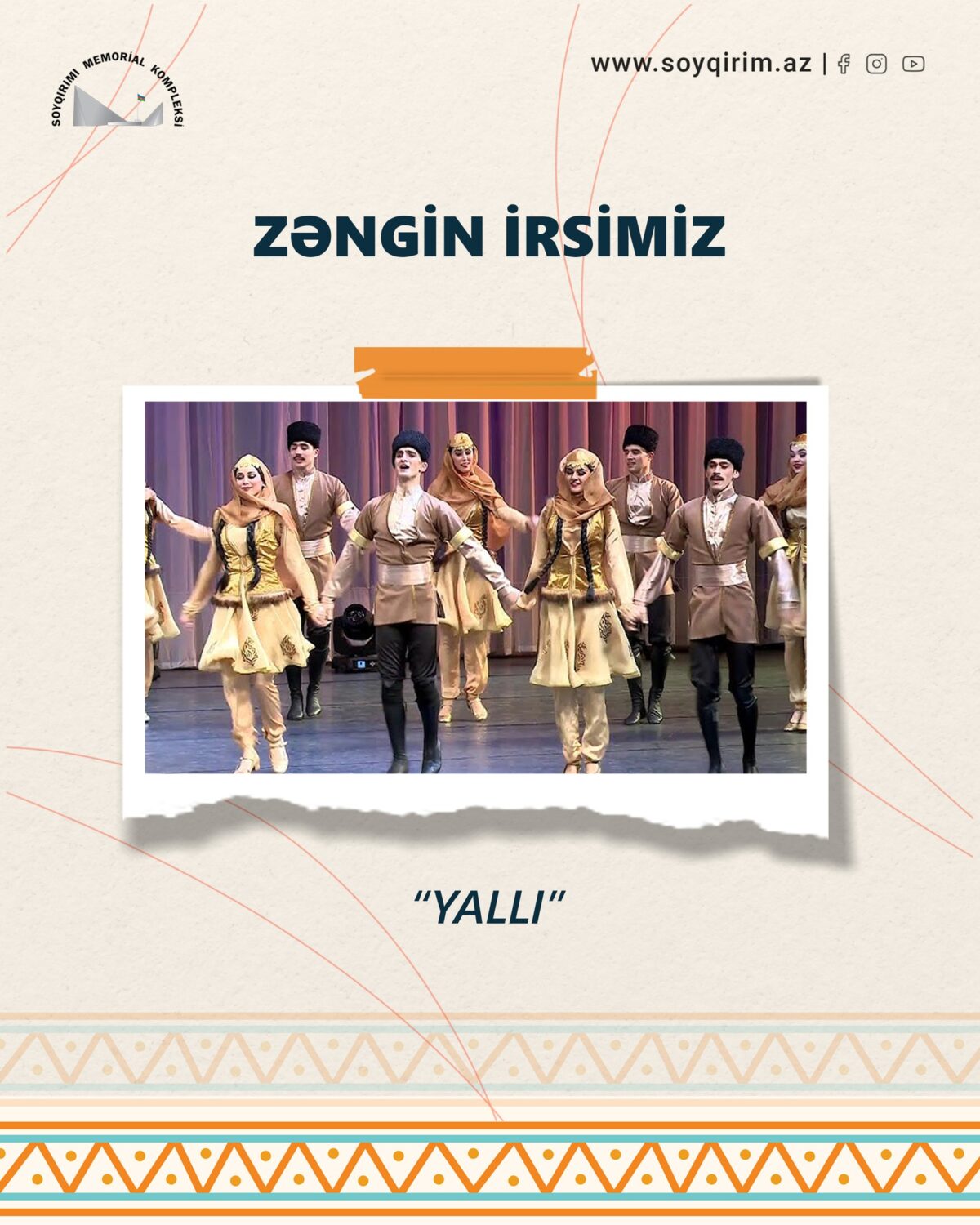Representative of Azerbaijan’s Cultural Heritage: The Yalli Dance

Yalli is one of the oldest and most famous types of Azerbaijani folk dances. This dance embodies collective activity and symbolizes solidarity, joy, unity, and life energy. During the dance, participants join hands or place their hands on each other’s shoulders and move in a circle. Yalli begins in a solemn manner and then gradually accelerates, becoming fast and energetic. The movements and the music accompany one another, making the dance unique both emotionally and rhythmically. Yalli is also a ceremonial dance that dates back to ancient times and was inscribed on UNESCO’s Intangible Cultural Heritage List in 2018.
The word “Yalli” can be translated as “row” or “chain.” This dance is also known by other names such as “halay” and “jelman.” The word “Yalli” is derived from the Mongolian and Manchu words “halah” and “hele,” which mean “to relax” and “to set free.” This etymology reflects the collective and liberating nature of the dance.
The Yalli dance is rooted in the ancient ceremonial dances of Turkic and Altai peoples. It is a game that reflects the rhythm, energy, and cycle of life. Rock carvings discovered in regions such as Gobustan and Ordubad contain depictions of this dance. Historically, Yalli dates back to pre-Christian times, deeply connected with the energy of life.
Yalli has also been incorporated into many works by Azerbaijani composers. For example, motifs of Yalli are widely used in Uzeyir Hajibeyov’s opera “Koroglu” and Muslim Magomayev’s opera “Nargiz.” These works demonstrate the artistic and emotional power of Yalli and highlight its influence on national musical culture.






